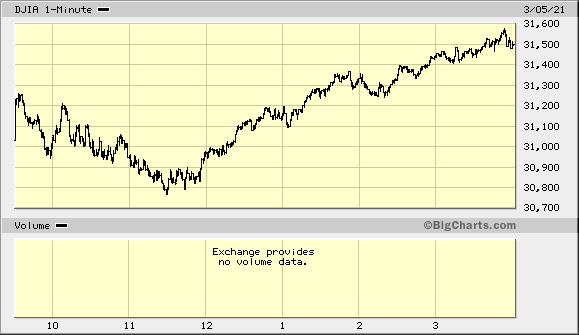That pushed the deficit to $1.05 trillion, a record for the first five months of the fiscal year that began in October, compared with $624.5 billion a year earlier, which begs the question, "do you miss President Trump?”
Biden, the Pretend-ident, is supposed to deliver a live announcement to the general public Thursday night, in which he promises to reveal the steps forward and what is expected from the American people. Keeping in mind the current climate of fear and command coming out of official Washington Democrats, Biden is likely to stumble through some thematic platitudes about defeating the dreaded COVID virus and announce some new form of control, possibly mandated vaccinations or COVID passes for entry into concerts, sports venues, maybe even restaurants.
Short of the kind of sick, twisted, communist-style dictates the Democrats (and, let's not forget the compliant Republicans who are just as large a part of the problem), expect Biden's monologue to last no more than 20 minutes, as the doddering old fool can barely remember what day it is or where he is at a given moment.
What the US projects as government - protected from its own people by barbed wire and National Guard troops - is about as far removed from a representative Republic than the founding fathers might have envisaged. It is wholly illegitimate, so watch the address, turn it off and don't comply. American patriots desperately need to take the country back from the occupiers in Washington DC. Barring that (because nobody wants to confront the military), simple non-compliance with orders from federal "authorities" will have to suffice for now.
Whatever the case with federal government, Wall Street seems to be enjoying the ride. Despite the NASDAQ floundering just below its 50-day moving average, the Dow Jones Industrials rose to a record close on Wednesday and looks to add to those gains Thursday. Stock futures have exploded higher overnight, aided by anticipation in Europe of Thursday's ECB policy announcement, another nothing-burger designed to keep everybody in the game as ECB President, Christine Lagarde, is not expected to do much besides mumble some nonsense about bonds, bond-buybacks, swaps, and assuredness that the central bank is prepared to support the euro for the long haul.
Meanwhile, the drip, drip, drip of fiat currencies melting down into a pool of mush and worthlessness continues almost imperceptibly. The world as we know it being torn to shreds by a confluence of forces. The drive by elites for a "Great Reset" wherein they control everything right down to digital fiat in your digital central bank account, is countered by a mass exodus from dollars, euros, pounds, and yen, into anything else, but in particular, gold, silver, bitcoin, other cryptocurrencies, canned goods, guns and ammo.
Like it or not, $1400 and an extra $300 in unemployment benefits for millions of dissatisfied former workers isn't going to keep the herd in tow. In addition to what Wall Street likes to call pent up demand, there's an ample supply of pent up hatred and disgust. It seems some people still believe last November's elections were stolen from President Trump and others, and they are still seething. It's that underlying anger that keeps troops on the streets of America's capitol and the likes of Facebook, Twitter, and Google censoring much of the commentary that doesn't fit the new Democrat nanny state narrative.
The unwind will take time. With any luck it won't be too violent or disturbing to children.
In terms of upset, one need look no further than the foibles of the redditers from wallstreetbets pitted against the horde of hedge fund managers still trying to short shares of GameStop (GME). Though the mainstream media has chosen to look the other way on this one, the battle has been re-engaged and the reddit crowd seems to be winning, sending shares of the company to dizzying heights on Wednesday. GME hit 348.50, before falling back to 198.00, closing at 265. Fortunes are being made and lost minute by minute, but nobody seems to care and the SEC is powerless to do anything about it. This episodic power struggle is a portent of things to come, as society splinters and factions vie for power and control.
It's useful to keep an eye on GME, along with struggling silver and bitcoin, which has regained momentum to the upside and is approaching all-time highs from late February ($58,367). Currently checkin in above $56,000, bitcoin is a proxy for dollar devaluation and escape from the central bank matrix. It should be owned, at least in part, by everybody who desires freedom of movement and of commerce. Mass adoption continues to drive the price, as there is a finite quantity standing in stark contrast to the ever-depleting plunder of fiat currencies backed by nothing, currently being printed into oblivion.
Destruction of purchasing power takes time. The Federal Reserve has been at it for 108 years, with the past 49 of particular high quality. The passage of the latest COVID relief bill and new spending which is sure to be announced tonight by befuddled Biden are just more evidence of the Fed's ultimate intent.
Papa Joe hits the airwaves Thursday night at 8:00 pm ET (5:00 pm on the West Coast) in his first televised address to the nation since being installed in the White House on January 20. Whatever he mouths probably won't matter much in the long run but his appearance is usually good for a few minutes hate or maybe a laugh or two. Take the under, which is 23 minutes. Drinking game word is “pandemic.”
At the Close, Wednesday, March 10, 2021:
Dow: 32,297.02, +464.28 (+1.46%)
NASDAQ: 13,068.83, -4.99 (-0.04%)
S&P 500: 3,898.81, +23.37 (+0.60%)
NYSE: 15,521.83, +146.20 (+0.95%)






